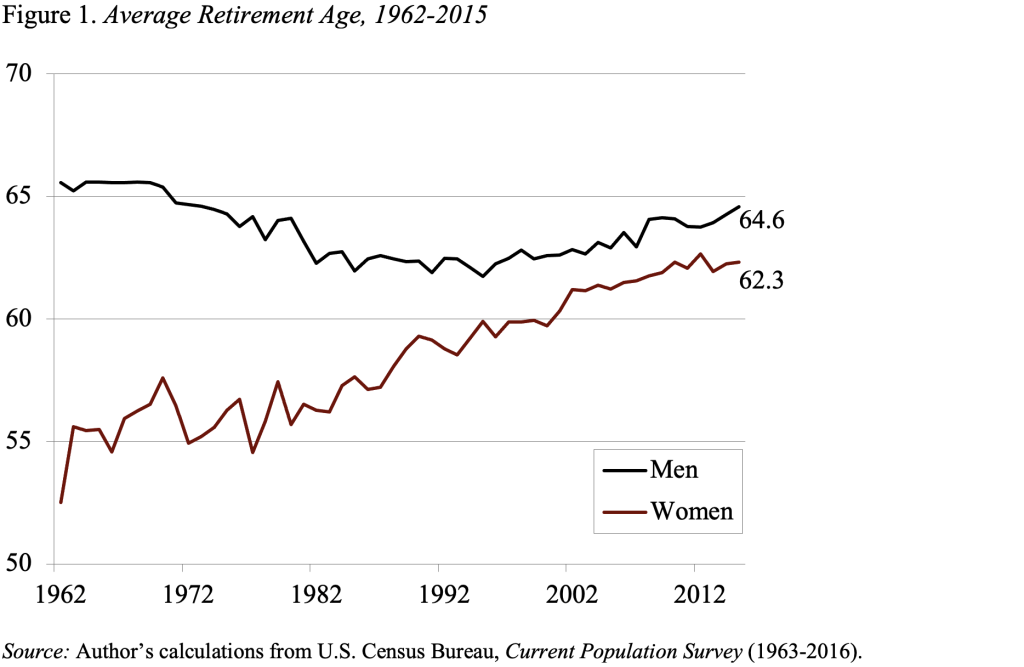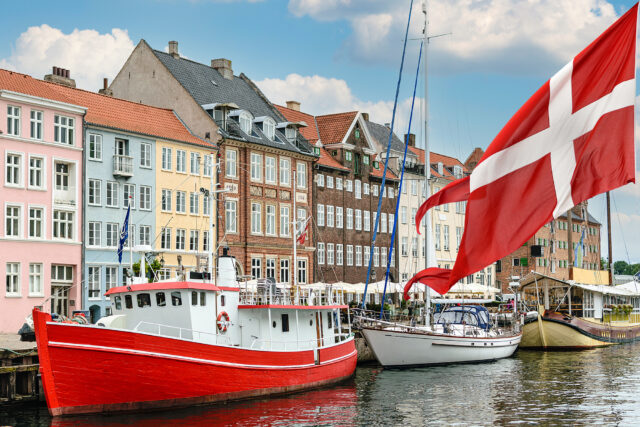
Why the Average Retirement Age Is Rising
Alicia H. Munnell is a columnist for MarketWatch and senior advisor of the Center for Retirement Research at Boston College.
Retirement age is moving up for men and holding steady for women.
About half of today’s working-age households will not be able to maintain their standard of living in retirement. Social Security will provide less relative to pre-retirement earnings; 401(k) balances are meager; and half the private sector workforce does not have an employer-sponsored plan. At the same time, with rising life expectancy the number of years spent in retirement has increased dramatically, health care costs are high and rapidly rising, and interest rates are at historic lows. Retirees are in trouble.
Three changes can alter the bleak outlook: encourage people to work longer; make it easy for homeowners to tap their home equity; and cover the uncovered through some type of auto-IRA program. This blog post provides a checkup on the working-longer lever by looking at recent numbers on the average retirement age – the age at which the labor force participation rate drops below 50 percent.
From the beginning of the 20th century, the labor force participation of older men had declined steadily until the mid-1980s, when it gradually began to increase. As a result, the average retirement age for men has slowly risen from a low of 62 in 1985 to almost 65 in 2015. This upswing is bringing their average retirement age back to levels not seen since the 1960s.

Using the same measure for women as men, their average retirement age was about 62 in 2015. It should be noted that trends in women’s average retirement age reflect both their increasing labor force participation over time and the factors that affect retirement behavior.
Several factors have contributed to the rise in the retirement age since the mid-1980s.
- Social Security: Changes made work more attractive relative to retirement. The liberalization, and for some the elimination, of the earnings test removed what many saw as an impediment to continued work. The delayed retirement credit, which increases benefits for each year that claiming is delayed between the Full Retirement Age and age 70, has also improved incentives to keep working.
- Pension type: The shift from defined benefit to 401(k) plans eliminated built-in incentives to retire. Studies show that workers covered by 401(k) plans retire a year or two later on average than similarly situated workers covered by a defined benefit plan.
- Education: People with more education work longer. Over the last thirty years, education levels have increased significantly.
- Improved health and longevity. Life expectancy has increased, and much of the evidence suggests that people are healthier as well. The correlation between health and labor force activity is very strong.
- Less physically demanding jobs: With the shift away from manufacturing, jobs now involve more knowledge-based activities, which put less strain on older bodies.
- Joint decisionmaking. More women are working, wives on average are three years younger than their husbands, and husbands and wives generally like to coordinate their retirement. If wives wait to retire until age 62 to qualify for Social Security, that pattern would push husbands’ retirement age towards 65.
- Decline of retiree health insurance. Combine the decline of employer-provided retiree health insurance with the rapid rise in health care costs, and workers have a strong incentive to keep working and maintain their employer’s health coverage until they qualify for Medicare at 65.
- Non-pecuniary factors. Older workers tend to be among the more educated, the healthiest, and the wealthiest. Their wages are lower than those earned by their younger counterparts and lower than their own past earnings. This pattern suggests that money may not be the only motivator.
While all these factors help explain the gains since the mid-1980s, I was concerned that they had played themselves out. At least for men, though, the increase in the average retirement age from 63.9 in 2013 to 64.6 in 2015 is encouraging.






